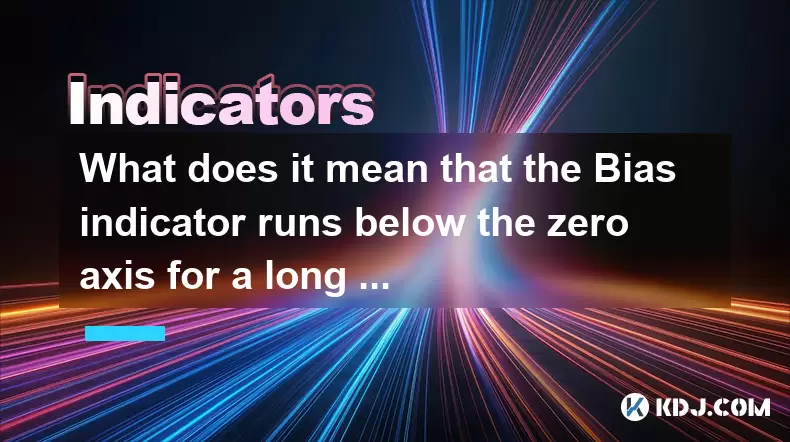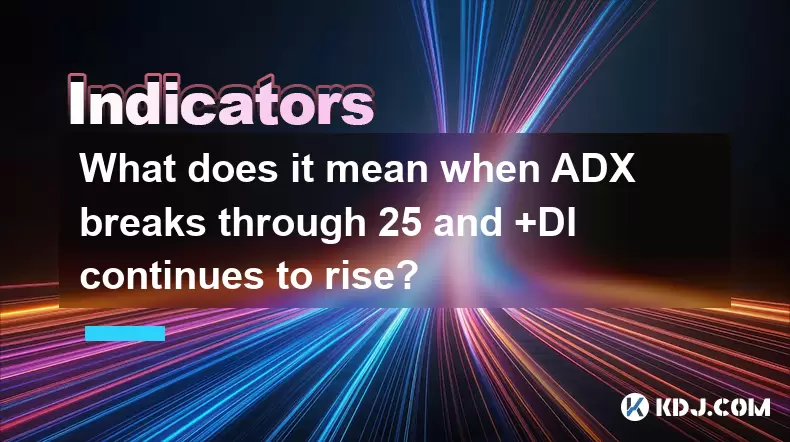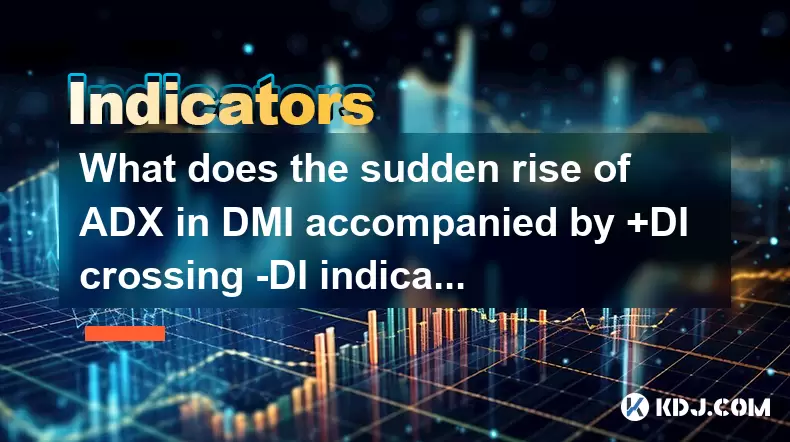-
 Bitcoin
Bitcoin $117600
1.78% -
 Ethereum
Ethereum $3742
4.20% -
 XRP
XRP $3.145
2.58% -
 Tether USDt
Tether USDt $1.000
0.03% -
 BNB
BNB $783.7
3.64% -
 Solana
Solana $186.2
4.95% -
 USDC
USDC $1.000
0.04% -
 Dogecoin
Dogecoin $0.2366
5.41% -
 TRON
TRON $0.3180
1.96% -
 Cardano
Cardano $0.8248
4.11% -
 Hyperliquid
Hyperliquid $44.33
7.38% -
 Sui
Sui $3.978
9.94% -
 Stellar
Stellar $0.4381
5.56% -
 Chainlink
Chainlink $18.34
5.20% -
 Hedera
Hedera $0.2650
12.59% -
 Bitcoin Cash
Bitcoin Cash $554.8
6.94% -
 Avalanche
Avalanche $24.07
4.41% -
 Litecoin
Litecoin $113.1
3.56% -
 Toncoin
Toncoin $3.369
10.08% -
 UNUS SED LEO
UNUS SED LEO $8.990
0.00% -
 Shiba Inu
Shiba Inu $0.00001403
6.04% -
 Ethena USDe
Ethena USDe $1.001
0.02% -
 Uniswap
Uniswap $10.52
6.80% -
 Polkadot
Polkadot $4.124
5.40% -
 Monero
Monero $324.5
-1.06% -
 Dai
Dai $1.000
0.02% -
 Bitget Token
Bitget Token $4.584
1.79% -
 Pepe
Pepe $0.00001257
5.70% -
 Aave
Aave $298.2
5.29% -
 Cronos
Cronos $0.1330
6.22%
偏置指示器长时间以下零轴以下是什么意思?
“科学家在极端条件下发现了新的深海珊瑚,为海洋生物多样性和气候韧性提供了见解。”
2025/06/17 14:00

了解加密货币交易中的偏差指标
偏差指标是加密货币交易者常用的技术分析工具,以评估资产是否过多或超卖资产。它衡量当前价格与其移动平均值的偏差,通常在设定的期间(例如10或20天)。当该指标长时间以下零轴以下时,它标志着市场上持续的看跌情绪。

这种持续的负值表明,价格一直在移动平均水平上低于移动平均水平,这表明下降趋势强劲和缺乏购买压力。
偏置指标如何工作?
要了解为什么保持零以下的偏差指标很重要,必须首先掌握其功能:
- 使用公式计算偏置指标:
偏见=(当前价格 - 移动平均值) /移动平均值100 * - 正偏见表明价格高于移动平均值,信号强度。
- 负偏见意味着价格低于移动平均水平,显示出弱点。
当偏见长期存在时,它反映了卖方占主导地位的长时间看跌阶段,而且价格行动没有实质性的恢复。
对加密市场的长时间负偏见的含义
在以其波动性而闻名的加密货币的背景下,长期的负偏见可以暗示几件事:
- 持续的销售压力:持续的销售活动一致,而买家几乎没有利息将价格推高。
- 投资者信心的丧失:由于宏观经济状况,监管新闻或链接界限较差,交易者可能会失去对资产的信心。
- 趋势延续信号:这可能表明,除非发生根本或技术转变,否则现有的下降趋势可能会继续下去。
例如,在2018 - 2019年加密货币冬季,许多主要加密货币的偏见指标数月持续了数月,这反映了普遍的看跌环境。
如何与其他工具一起解释偏差指标
仅依靠偏置指标可能会导致虚假信号。因此,应与其他工具一起使用:
- 相对强度指数(RSI) :检查资产是超卖还是超买。
- 移动平均收敛差异(MACD) :用于确认趋势逆转或连续性。
- 体积分析:如果偏差仍然为负时,则音量拾取,则可能表示积累或潜在的逆转。
交易者经常使用这些组合来滤除噪声,并确认长期的负偏见是否真正反映了下降趋势的延续还是暂时的弱点。
分析长期负偏见的实用步骤
如果您在较长的时间内观察到零线以下的偏差指标,则是分析情况的方法:
- 确定时间表:确定它是在每日,每周还是每月图表上发生的。更长的时间范围更大。
- 检查市场基本面:研究与资产相关的新闻,交换清单/降落,监管变更或开发更新。
- 审查链指标:玻璃节或santiment等工具可以提供有关鲸鱼运动,网络使用和供应分配的见解。
- 监视体积模式:负偏置期间的体积增加可能表明投降或早期积累。
- 注意移动平均值的交叉:看涨的跨界可能表示趋势变化,即使偏见仍然为负。
这些步骤有助于避免膝盖反应,并确保决策基于综合数据,而不是孤立的指标。
对偏置指标的常见误解
许多交易者由于简单性而误解了偏见指标。这是一些常见的陷阱:
- 假设仅仅因为偏见很低而逆转:低或负偏见并不一定意味着价格很快就会反弹。在强大的下降趋势中,资产可以长期以来保持超额销售。
- 忽略资产的波动:高度挥发性的加密货币会导致偏见狂奔,从而使其在没有适当平滑技术的情况下降低了可靠性。
- 仅使用一次性框架:仅依靠短期图表可能会导致不正确的结论。多时间帧分析至关重要。
避免这些错误需要耐心和交叉引用与其他分析工具和市场数据。
常见问题
问:是否可以将偏置指标用于所有类型的加密货币?
是的,偏差指标可以应用于任何加密货币,但其有效性取决于资产的流动性和波动性。与较小CAP AltCoins相比,Bitcoin和以太坊等更具成熟的硬币往往会产生更清晰的信号。
问:负偏见总是卖出信号吗?
不,仅一个负偏见不是确定的卖出信号。它只是表明价格低于移动平均线。交易者应在做出决定之前寻求其他确认。
问:偏置指示器与布林频带有何不同?
尽管两者都衡量价格偏差,但偏置指标将价格与移动平均值(百分比的移动平均值进行比较),而Bollinger频段则通过围绕移动平均线的标准偏差显示波动性。
问:哪种移动平均值最适合计算偏置指标?
没有一种适合的答案。共同的选择包括为期10天,20天或50天的简单移动平均值。较短的时期使指示器更加敏感,而更长的时间则使数据平滑。
免责声明:info@kdj.com
所提供的信息并非交易建议。根据本文提供的信息进行的任何投资,kdj.com不承担任何责任。加密货币具有高波动性,强烈建议您深入研究后,谨慎投资!
如您认为本网站上使用的内容侵犯了您的版权,请立即联系我们(info@kdj.com),我们将及时删除。
- PI硬币,钱包特征和二十个Coinbase:什么是嗡嗡声?
- 2025-07-26 18:30:12
- WorldCoin,Punisher Coin和Meme Coin Mania:什么是哈普斯?
- 2025-07-26 18:30:12
- 定罪,司法系统和谋杀:查看最近的案件和转变观点
- 2025-07-26 18:50:11
- Shiba Inu,Remittix和市场激增:炒作是什么?
- 2025-07-26 19:10:12
- Dogecoin轨迹:从模因到主流及以后的加密货币
- 2025-07-26 17:10:14
- Lasmeta,Pyth网络,Novadrop NFTS:解码嗡嗡声
- 2025-07-26 16:30:12
相关百科

这意味着在第一次以短位置安排移动平均线后,篮板被阻塞?
2025-07-26 10:51:10
了解短期移动平均配置当交易者在移动平均值中提到“短职位安排”时,他们描述了一种技术设置,其中较短的移动平均值低于长期的交叉。这种配置通常标志着看跌趋势。例如,当5周期移动平均线(MA)在10个周期MA以下和10个周期的MA以下时,已经以下是20个周期的MA时,据说移动平均值是按降序对齐的。这种对齐通...

当价格连续五天沿5天移动平均线上涨时,这意味着什么?
2025-07-26 08:07:37
了解加密货币交易中的5天移动平均值5天移动平均线(5DMA)是加密货币交易中广泛使用的技术指标,该指标计算过去五天资产的平均收盘价。贸易商使用此指标来平滑短期价格波动并确定基本趋势。当价格连续五天沿5天移动平均线上升时,这表明市场上的势头持续一致。这种模式表明,每天的收盘价不仅高于前一天的收盘价,而...

当ADX突破25和 +DI继续上升时,这意味着什么?
2025-07-26 19:00:41
了解ADX指标及其阈值平均方向指数(ADX)是一种技术分析工具,用于衡量加密货币市场趋势的强度。它不是指示趋势的方向,而是它的强大。 ADX值范围从0到100,低于20的值通常表明市场较弱或范围的市场,而高于25的值则表明趋势是一种加强趋势。当ADX突破25时,它表明市场正在从合并阶段转变为更明确的...

当价格突破了60天的移动平均水平,但第二天收缩是什么意思?
2025-07-26 06:01:03
了解加密货币交易中的60天移动平均60天的移动平均线(60DMA)是加密货币市场中广泛使用的技术指标,在过去60个交易日内平滑了价格数据。它通过滤除短期价格波动来帮助交易者确定整体趋势方向。当目前的价格高于60dma时,它通常标志着看涨的趋势,而低于下方的价格表明看跌势头。交易者会关注跨界车(当价格...

DMI中ADX突然崛起伴随 +di Crossing -di表示?
2025-07-26 13:21:19
了解DMI及其核心组件定向运动指数(DMI)是一种技术分析工具,用于确定加密货币价格移动的趋势的存在和强度。它由三个关键组成部分组成:平均方向指数(ADX) ,正方向指标(+di)和负方向指示器(-DI) 。 ADX无论方向如何衡量趋势的强度,而 +di和-di分别反映了上下价格动量。在分析Bitc...

当Obv继续达到新高点但价格停滞时,这意味着什么?
2025-07-26 09:57:50
了解体积体积(明显)指标平衡量(OBP)是技术分析指标,该指标使用量流量来预测库存或加密货币价格的变化。由乔·格兰维尔(Joe Granville)开发的Obv在一个简单的前提下运行:数量先于价格变动。计算很简单 - 与上一时期相比,加密货币的收盘价上涨时,该期间的体积添加到累积的OBP中。相反,如...

这意味着在第一次以短位置安排移动平均线后,篮板被阻塞?
2025-07-26 10:51:10
了解短期移动平均配置当交易者在移动平均值中提到“短职位安排”时,他们描述了一种技术设置,其中较短的移动平均值低于长期的交叉。这种配置通常标志着看跌趋势。例如,当5周期移动平均线(MA)在10个周期MA以下和10个周期的MA以下时,已经以下是20个周期的MA时,据说移动平均值是按降序对齐的。这种对齐通...

当价格连续五天沿5天移动平均线上涨时,这意味着什么?
2025-07-26 08:07:37
了解加密货币交易中的5天移动平均值5天移动平均线(5DMA)是加密货币交易中广泛使用的技术指标,该指标计算过去五天资产的平均收盘价。贸易商使用此指标来平滑短期价格波动并确定基本趋势。当价格连续五天沿5天移动平均线上升时,这表明市场上的势头持续一致。这种模式表明,每天的收盘价不仅高于前一天的收盘价,而...

当ADX突破25和 +DI继续上升时,这意味着什么?
2025-07-26 19:00:41
了解ADX指标及其阈值平均方向指数(ADX)是一种技术分析工具,用于衡量加密货币市场趋势的强度。它不是指示趋势的方向,而是它的强大。 ADX值范围从0到100,低于20的值通常表明市场较弱或范围的市场,而高于25的值则表明趋势是一种加强趋势。当ADX突破25时,它表明市场正在从合并阶段转变为更明确的...

当价格突破了60天的移动平均水平,但第二天收缩是什么意思?
2025-07-26 06:01:03
了解加密货币交易中的60天移动平均60天的移动平均线(60DMA)是加密货币市场中广泛使用的技术指标,在过去60个交易日内平滑了价格数据。它通过滤除短期价格波动来帮助交易者确定整体趋势方向。当目前的价格高于60dma时,它通常标志着看涨的趋势,而低于下方的价格表明看跌势头。交易者会关注跨界车(当价格...

DMI中ADX突然崛起伴随 +di Crossing -di表示?
2025-07-26 13:21:19
了解DMI及其核心组件定向运动指数(DMI)是一种技术分析工具,用于确定加密货币价格移动的趋势的存在和强度。它由三个关键组成部分组成:平均方向指数(ADX) ,正方向指标(+di)和负方向指示器(-DI) 。 ADX无论方向如何衡量趋势的强度,而 +di和-di分别反映了上下价格动量。在分析Bitc...

当Obv继续达到新高点但价格停滞时,这意味着什么?
2025-07-26 09:57:50
了解体积体积(明显)指标平衡量(OBP)是技术分析指标,该指标使用量流量来预测库存或加密货币价格的变化。由乔·格兰维尔(Joe Granville)开发的Obv在一个简单的前提下运行:数量先于价格变动。计算很简单 - 与上一时期相比,加密货币的收盘价上涨时,该期间的体积添加到累积的OBP中。相反,如...
查看所有文章

























































































